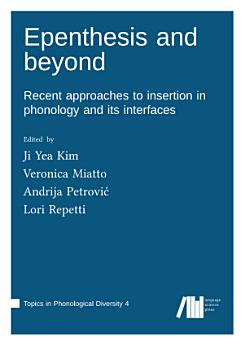Epenthesis and beyond
આ ઇ-પુસ્તક વિશે
લેખક વિશે
Ji Yea Kim is an Assistant Professor in the Department of English at Gyeongsang National University in Korea, holding a Ph.D. in Linguistics from Stony Brook University. Topics of her research range from speech production and perception to loanword phonology, variation, suffixation, and typology from both theoretical and experimental perspectives
Veronica Miatto has obtained her PhD in Linguistics at Stony Brook University. Her research involves using experimental methods to make cognitive and sociolinguistics assumptions at the interface of Phonology and Phonetics. More specifically, she has recently worked on the phonological status of word-finally inserted schwas in various Italian dialects, on phonologically distinctive places of articulation on the face in ASL, and on stop voicing both in Italian and Lio (Austronesian).
Andrija Petrović holds a PhD in Linguistics from Stony Brook University; his research brings together theoretical, empirical, and computational approaches to phonology and morphology. He has most recently been working on a characterization of morphological processes as logical string transductions, with a special focus on the interfaces with phonology and syntax.
Lori Repetti (PhD, UCLA, 1989) is a Professor in the Department of Linguistics at Stony Brook University, specializing in Italian and Romance phonology, dialectology, and language change. Her current research explores the interaction between phonology and other areas of grammar, microvariation, and the teaching of Linguistics.






